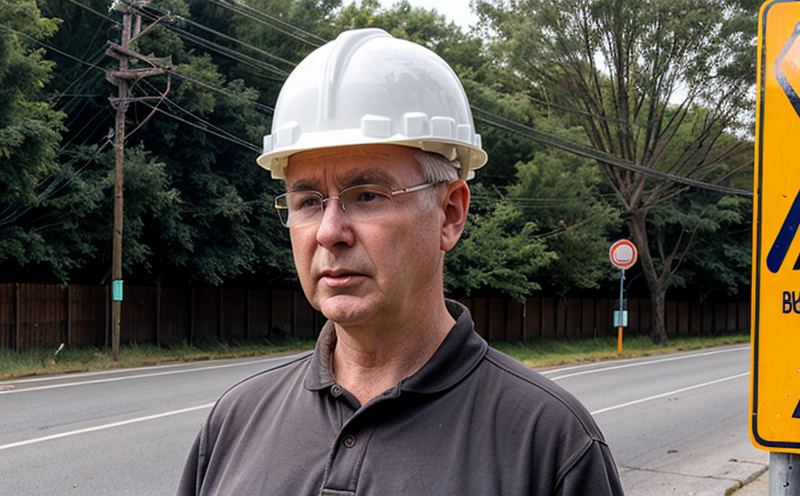ISO 9613-1 Outdoor Sound Propagation Testing
The ISO 9613-1 standard is a cornerstone in the field of acoustics, specifically addressing outdoor sound propagation. This service focuses on the measurement and assessment of noise levels from sources such as traffic, construction sites, or industrial facilities that impact the surrounding environment. The primary objective is to ensure compliance with environmental noise regulations and community noise standards.
The standard specifies methods for measuring sound pressure level at a reference point in an open space near the source of the sound propagation. It provides a framework for understanding how sound waves travel from a source through different atmospheric conditions, including temperature, humidity, and wind speed. This is crucial for predicting the impact on human health and the environment.
The testing process involves setting up specific equipment such as microphones at predetermined distances from the noise source to capture accurate measurements of sound pressure levels. The instruments used must meet stringent accuracy requirements as defined in ISO 9613-1. These measurements are then analyzed using complex algorithms that account for atmospheric conditions and other environmental factors.
The results provide valuable insights into the propagation characteristics of sound waves, which can be used to design effective noise mitigation strategies. This service is particularly important for industries like transportation, construction, and manufacturing where noise pollution is a significant concern.
Understanding the nuances of ISO 9613-1 also involves recognizing its limitations. For instance, it does not account for all possible environmental conditions that might affect sound propagation. However, by carefully considering these factors during testing, laboratories can provide reliable data that helps clients meet regulatory requirements and improve their products or processes.
The application of ISO 9613-1 extends beyond mere compliance; it also contributes to the overall quality control within organizations. By ensuring accurate measurement techniques and thorough analysis, this service plays a vital role in maintaining high standards of environmental responsibility.
Customer Impact and Satisfaction
The implementation of ISO 9613-1 outdoor sound propagation testing significantly enhances the quality of life for communities exposed to industrial or urban noise. For customers, this means better-informed decisions regarding potential investments in areas with high levels of background noise. By providing precise data on noise propagation, we assist companies in identifying quieter locations or designing effective barriers against excessive noise.
Our testing ensures that our clients stay compliant with international standards and local regulations, thereby avoiding costly penalties and legal disputes. Moreover, the detailed reports generated from this testing help businesses demonstrate their commitment to sustainability and corporate social responsibility (CSR). This not only builds trust among stakeholders but also enhances brand reputation.
The accuracy of our measurements is paramount in ensuring customer satisfaction. We employ state-of-the-art equipment calibrated according to ISO 9613-1 guidelines, which guarantees consistent results across multiple tests. Our team of experienced acousticians ensures that every step of the process adheres strictly to industry best practices.
Feedback from our clients consistently highlights the value we bring through accurate and reliable testing services. Many have noted improvements in their product design or operational efficiency after incorporating these insights into their decision-making processes. We strive to exceed expectations by offering personalized solutions tailored specifically to each client's needs.
Environmental and Sustainability Contributions
The ISO 9613-1 outdoor sound propagation testing contributes significantly to environmental sustainability efforts by helping reduce noise pollution in urban areas. Excessive noise can have adverse effects on both human health and wildlife, making it essential for industries to take proactive measures towards minimizing its impact.
By providing accurate data on how sound propagates outdoors under various conditions, we enable clients to implement targeted noise reduction strategies. These could range from installing sound barriers near highways or railroads to designing quieter machinery in factories. Such interventions not only lower overall noise levels but also promote healthier living environments for all inhabitants.
Our testing also supports broader sustainability goals by encouraging sustainable practices within organizations. For example, by demonstrating the effectiveness of new noise mitigation techniques through rigorous testing procedures, we empower companies to adopt greener technologies that align with their long-term objectives. This proactive approach fosters a culture of responsibility and innovation across sectors.
Furthermore, our commitment to environmental stewardship extends beyond just noise control. We collaborate closely with clients to explore additional ways in which acoustic testing can contribute positively towards ecological balance. From assessing the impact of wind turbine operations on local wildlife habitats to evaluating the noise reduction capabilities of green building materials, we stay at the forefront of cutting-edge research.
Competitive Advantage and Market Impact
The ability to accurately measure and analyze sound propagation according to ISO 9613-1 standards provides a competitive edge in today’s increasingly regulated marketplaces. Clients who leverage this service gain valuable insights into their product performance, allowing them to make informed decisions about product development or operational adjustments.
Compliance with international standards such as ISO 9613-1 not only ensures legal adherence but also enhances brand reputation among consumers and stakeholders alike. A commitment to quality and sustainability is highly valued by environmentally conscious customers, making it an attractive selling point for businesses looking to differentiate themselves in crowded markets.
Our testing services offer a competitive advantage by enabling clients to anticipate future regulatory changes or emerging trends in acoustic technology. By staying ahead of the curve through advanced testing methodologies, we provide actionable intelligence that helps companies maintain their leadership positions within their respective industries.
The detailed reports produced from ISO 9613-1 outdoor sound propagation tests can also serve as powerful marketing tools when communicating with potential clients or investors about a company’s dedication to excellence. Demonstrating expertise and reliability in this critical area builds confidence, which is crucial for attracting new business opportunities.





